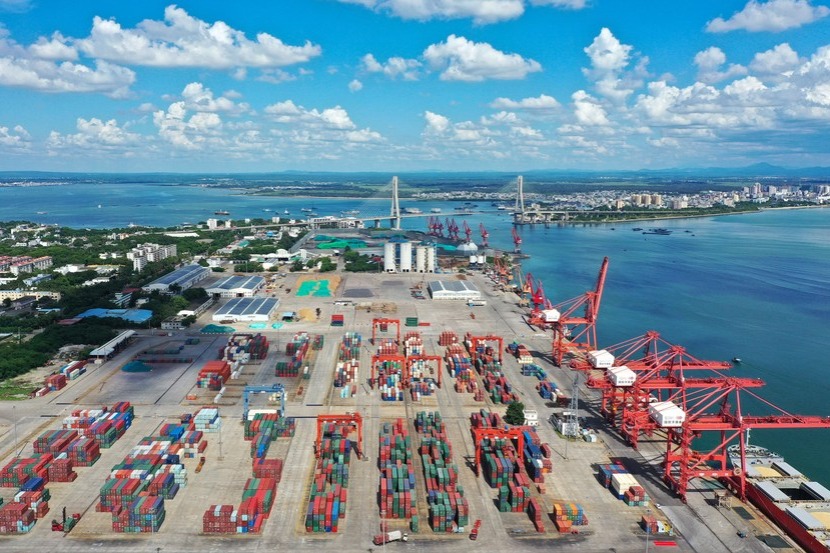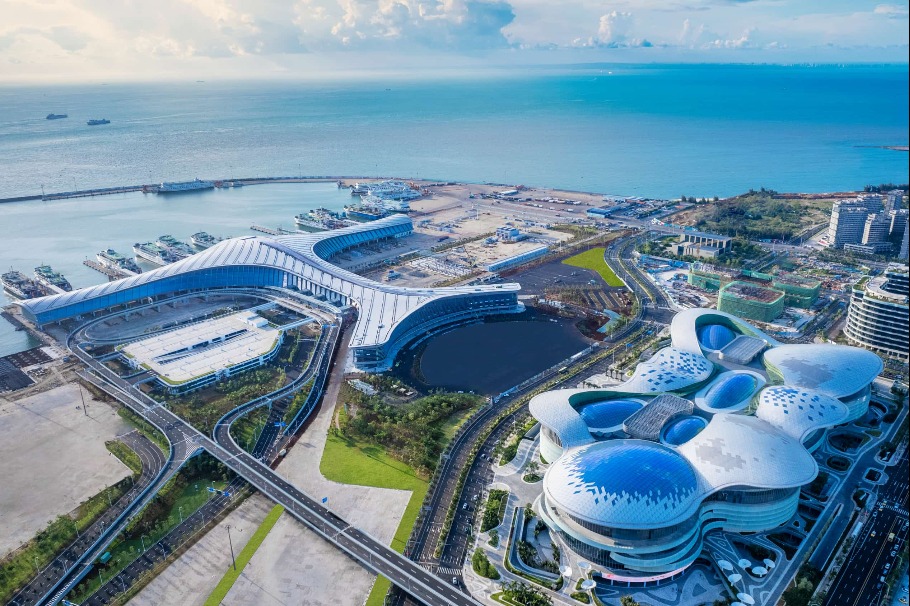Breakthroughs to push new industrialization
By Wang Yiming | China Daily | Updated: 2024-10-21 09:39

As China works to fully modernize its socialist system, advancing new industrialization and accelerating the construction of a strong manufacturing industry have become its key priorities.
It is critical to carefully assess both domestic and international changes in the coming years in light of profound and complex shifts in the global environment, a new wave of technological and industrial revolutions, and China's push for high-quality development.
The world is experiencing rapid and unprecedented changes. Global supply chains are being restructured at an accelerated pace, and the global economic landscape is undergoing significant shifts. Against this backdrop, China faces new challenges in its push for new industrialization.
The latest technological and industrial revolutions are being led by artificial intelligence, which is intersecting with fields like quantum technology and life sciences, leading to breakthroughs on multiple fronts.
The race for global tech leadership is intensifying, reshaping the competitive standing of nations and the global competitive landscape.
Competition among major powers for dominance in cutting-edge technology is growing fiercer. The United States is building "small yards with high walls" by expanding its control on high-tech exports to China, and in some cases, cutting off technological cooperation with China.
Meanwhile, this new technological revolution is shifting from replacing physical labor, as previous revolutions did, to replacing intellectual labor and expanding human intelligence.
Developed nations are leveraging smart manufacturing to offset high labor costs and are strengthening their control over high-value segments of the industrial value chain, further solidifying their competitive edge.
While AI is driving transformative changes in productivity, it also brings significant risks, making it urgent for major powers to collaborate in addressing the threats it poses, such as spreading disinformation, infringing on personal rights, creating security vulnerabilities, and deepening the intelligence gap.
Due to the COVID-19 pandemic, the Ukraine crisis, and global inflation, the world economy is slowly recovering, but growth remains sluggish. In the medium to long term, factors like aging populations, rising debt, income inequality, and slowing productivity growth will likely keep global economic growth subdued.
As the world's largest manufacturing hub, China faces significant challenges but also new opportunities.
Thanks to its massive domestic market and active participation in global trade, China has become a key player in global production. The ongoing reorganization of global supply chains offers China the chance to leverage its complete industrial system and vast market size.
On the supply side, the country is moving from a low- to mid-end manufacturing base to a major player in high-end manufacturing and technological innovation. This shift, along with China's rising position in the global value chain and increased openness to global markets, will strengthen its ability to integrate international production factors and control critical nodes in the supply chain.
On the demand side, China's capacity to absorb foreign goods and services continues to grow, making it the primary trading partner for over 140 countries and regions. China's massive market is becoming increasingly important, with many economies around the world deepening their dependence on Chinese demand, leading to closer economic ties between China and the rest of the world.
However, China's push for high-quality industrialization still faces challenges of unbalanced and insufficient development. The industrial system is large but not strong, comprehensive but lacking precision, with key core technologies still reliant on others.
The industrial foundation remains weak, and there are gaps in the supply and industrial chains. It is essential to overcome key core technological barriers, strengthen industrial capabilities, promote deep integration between the real economy and the digital economy, and enhance the resilience and security of the supply and industrial chains.
Advancing new industrialization also demands strengthening the industrial foundation. In recent years, China has made significant strides in closing the technological gap with global leaders in areas such as nuclear power, hydropower turbines, high-speed rail, construction machinery, and telecommunication equipment, gradually building international competitiveness.
However, basic products remain weak. It is critical to implement the industrial foundation rebuilding project on key areas related to industrial security so as to achieve self-reliance and improve the quality and competitiveness of essential components, materials, and software.
Additionally, new industrialization requires the deep integration of the real economy and the digital economy, and the resilience and security of supply chains and industrial chains.
Looking ahead, China is moving toward achieving its goal during the 15th Five-Year Plan (2026-30) period. It is important to promote China's industrial growth from being primarily factor-driven to innovation-driven, and drive breakthroughs in the quality of new industrialization.
First, the innovation strategy needs to shift from focusing on "catching up" to building "localized leading advantages". In the context of significant changes in the external environment, it not only serves as countermeasures, but is also a strategic choice to gain an edge in international technological competition.
Second, the innovation path needs to shift from "end-product integration" to strengthening innovation in "intermediate products".While some of China's end products, such as high-speed rail, construction machinery, and communication equipment, have already gained strong international competitiveness, there is still a high reliance on foreign sources for intermediate goods, such as components, parts, and basic materials.
Third, innovation policies need to shift from encouraging integrated innovation to encouraging original innovation. Whether it's about building localized leading advantages or strengthening intermediate product innovation, enhancing original innovation capacity is crucial to addressing key technological challenges. Only by improving the ability for original innovation and achieving more "zero-to-one" breakthroughs can China establish a solid foundation for achieving high-level technological self-sufficiency.
At the same time, it is necessary to focus on strengthening weak areas such as core components, critical software, advanced fundamental processes, essential materials, and industrial technology foundations. These will promote the advancement of industrial infrastructure and enhance its ability to support new industrialization.
Efforts should also be made to accelerate the application of next-generation digital and intelligent technologies across the entire manufacturing industry and supply chain, as well as to promote the digital transformation of small and medium-sized enterprises.
Developing and promoting cost-effective digital products, services, and solutions that meet the needs of SMEs is critical. Moreover, the implementation of smart manufacturing projects should be deepened, especially in foundational technologies like computing power, algorithms, and data, to enable the full-chain application of artificial intelligence across industries.
The writer is vice-chairman of the China Center for International Economic Exchanges.
The views do not necessarily reflect those of China Daily.
























